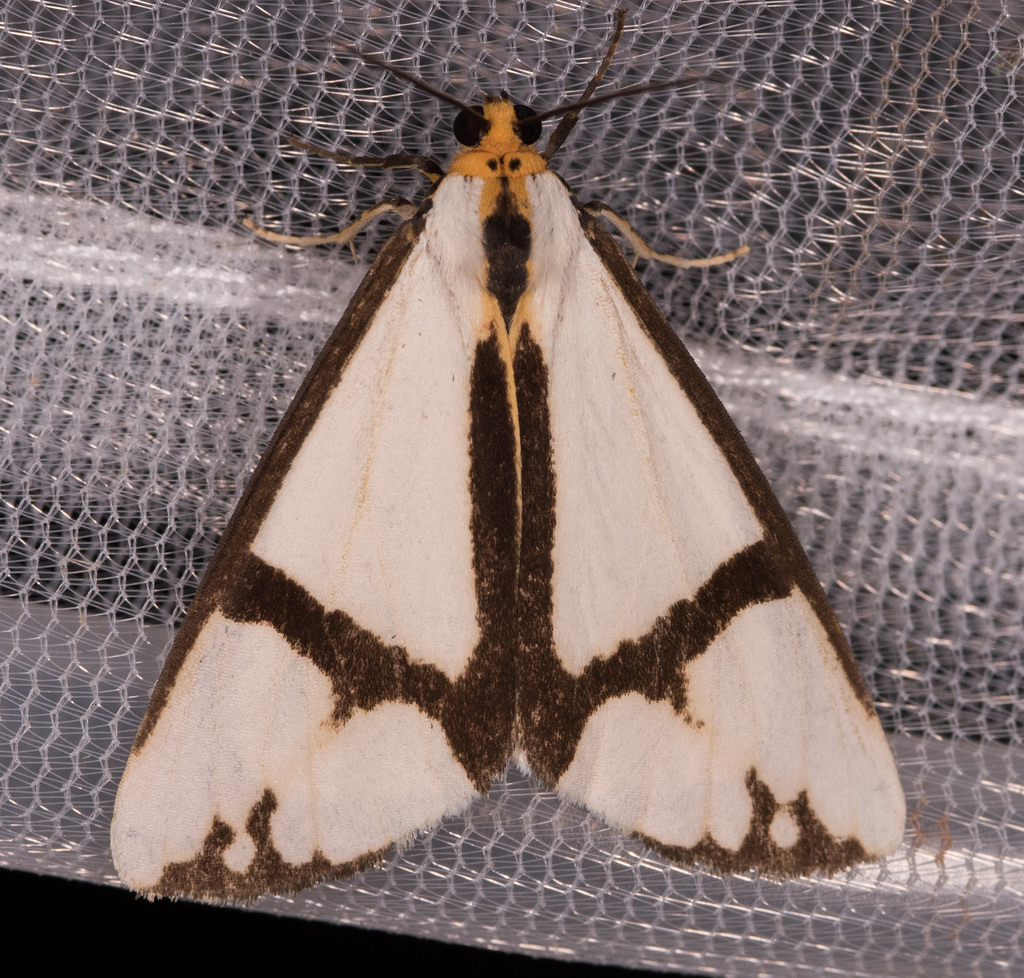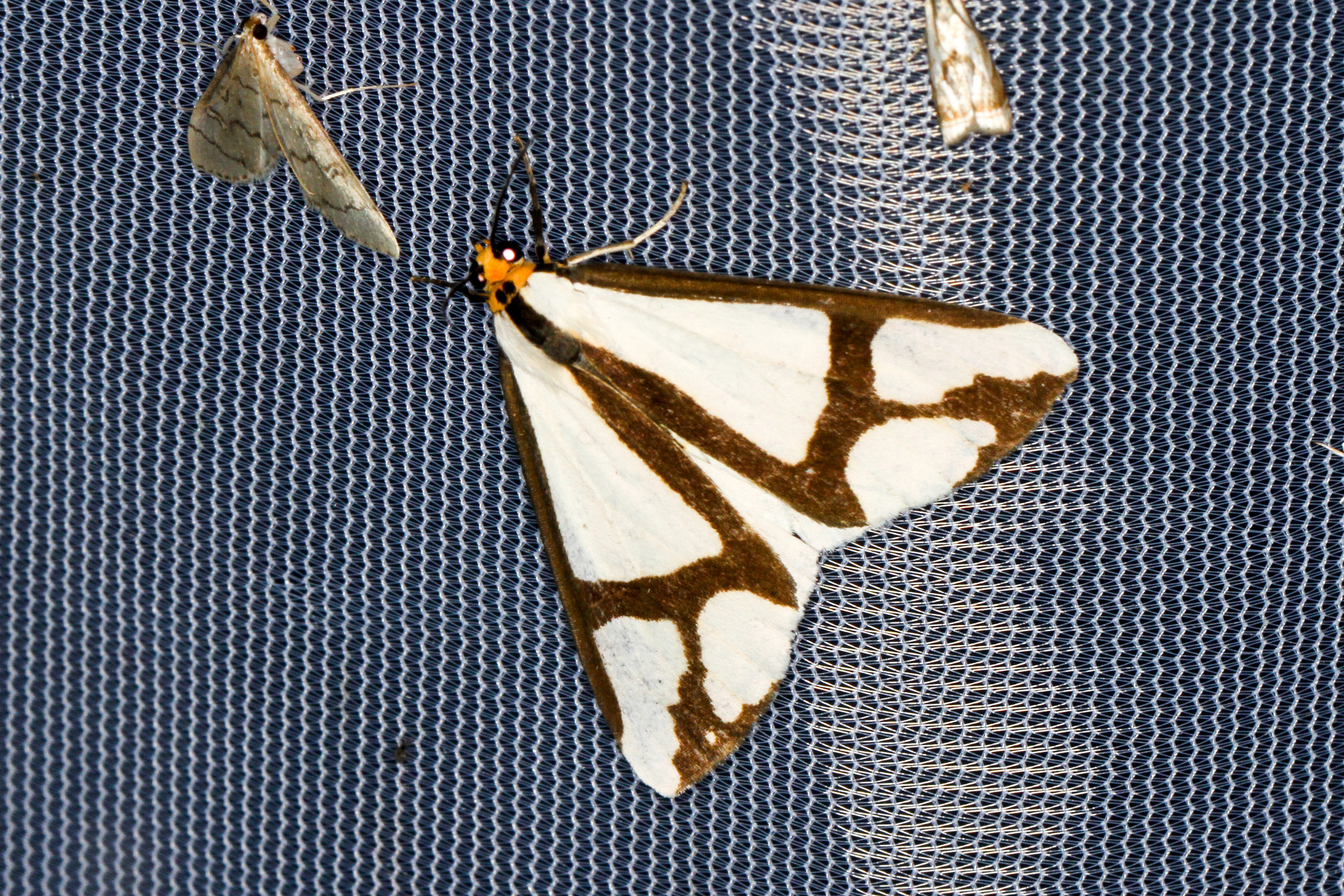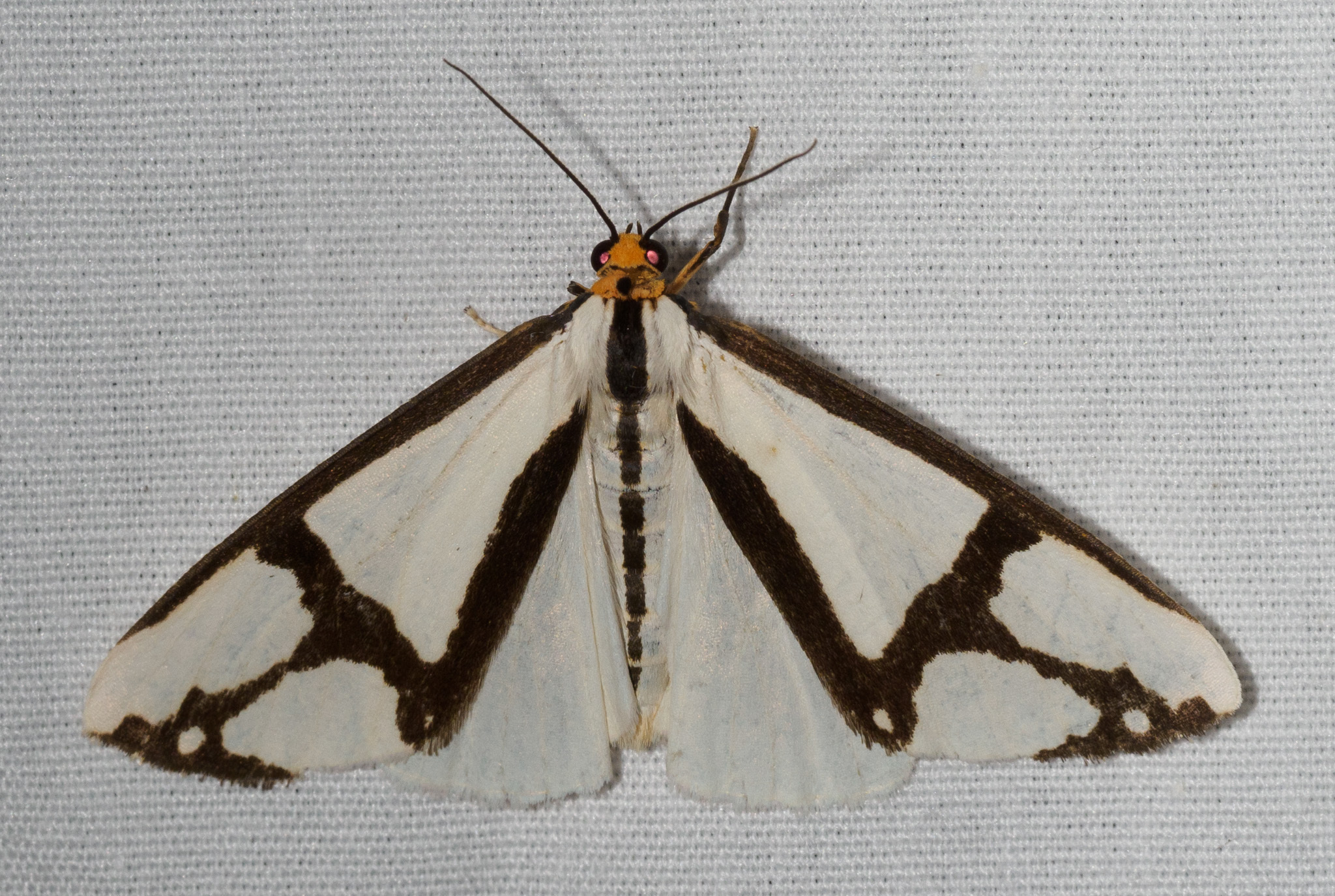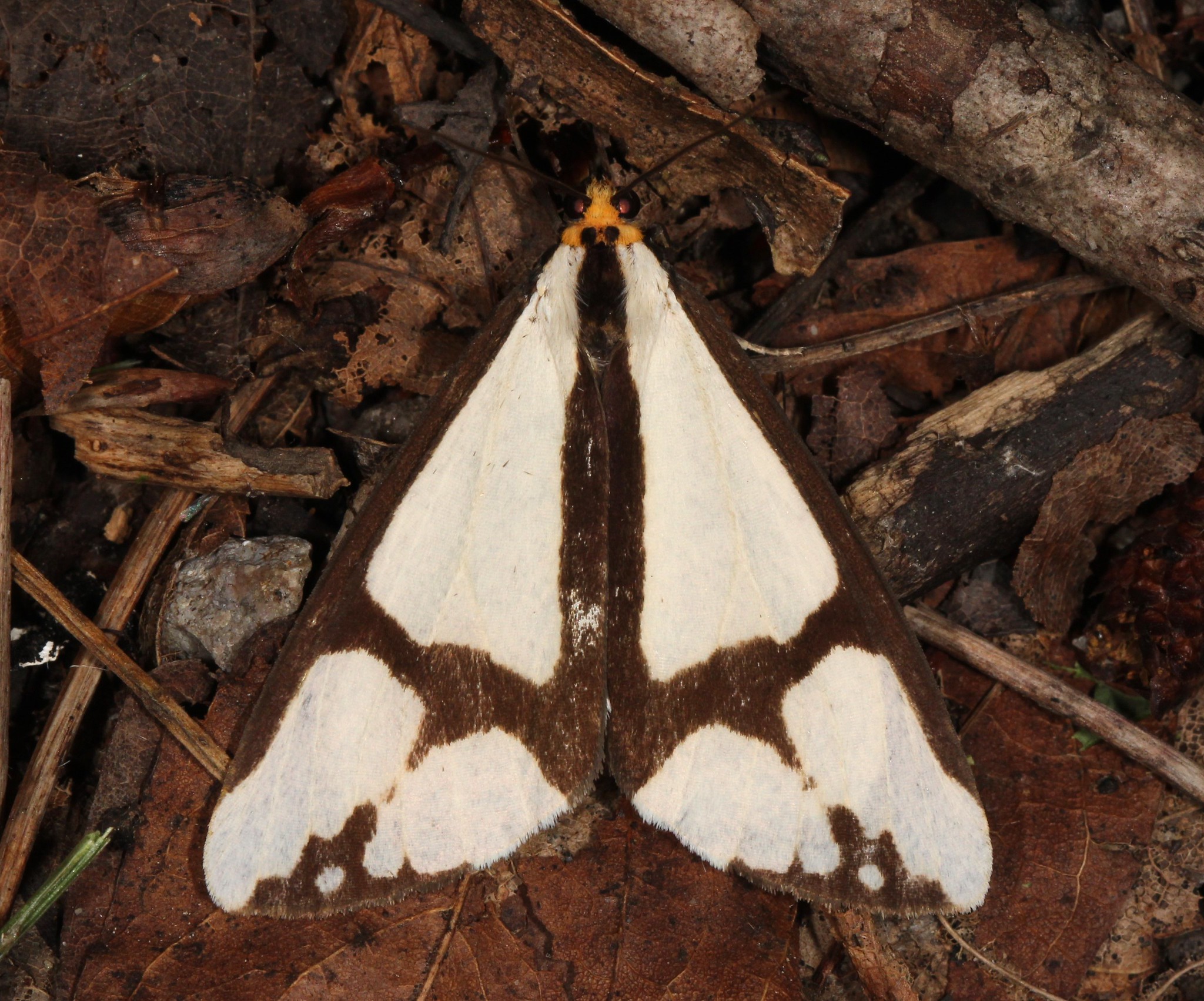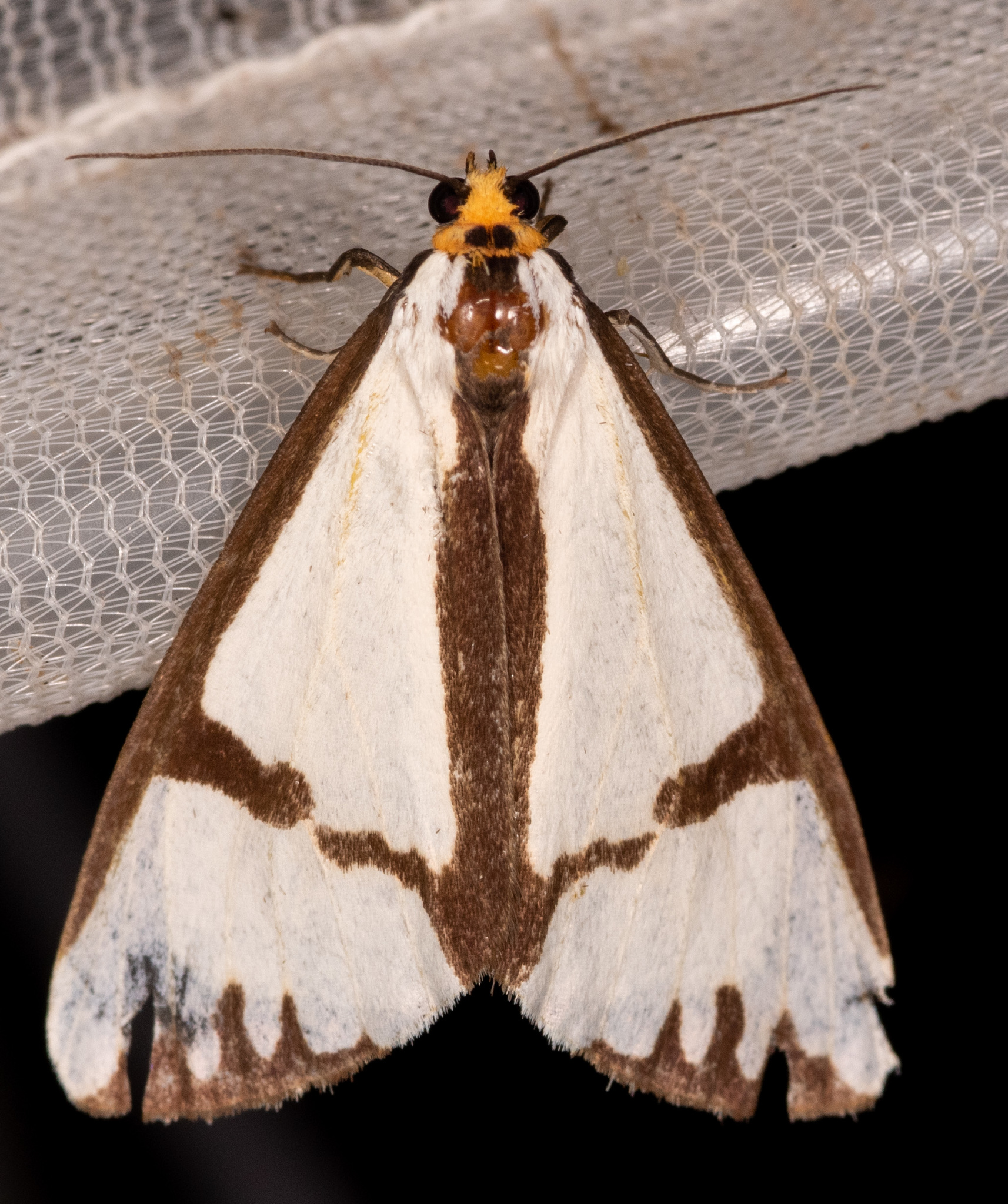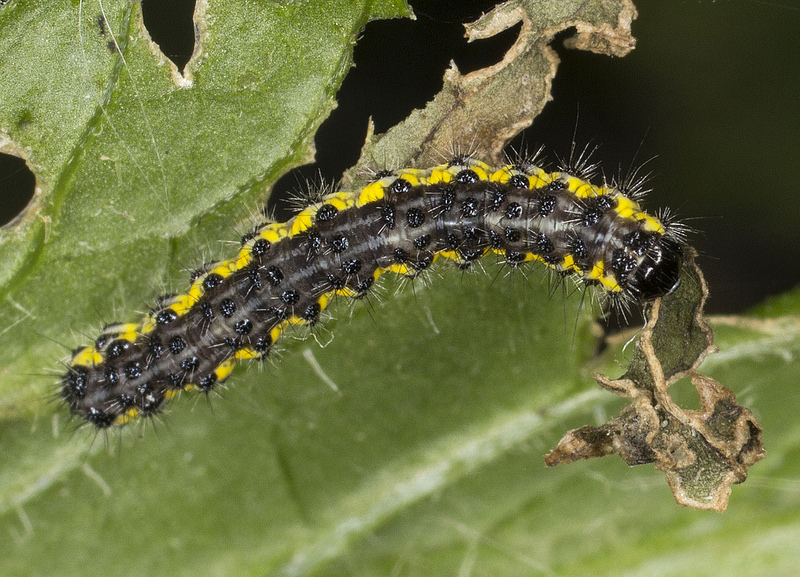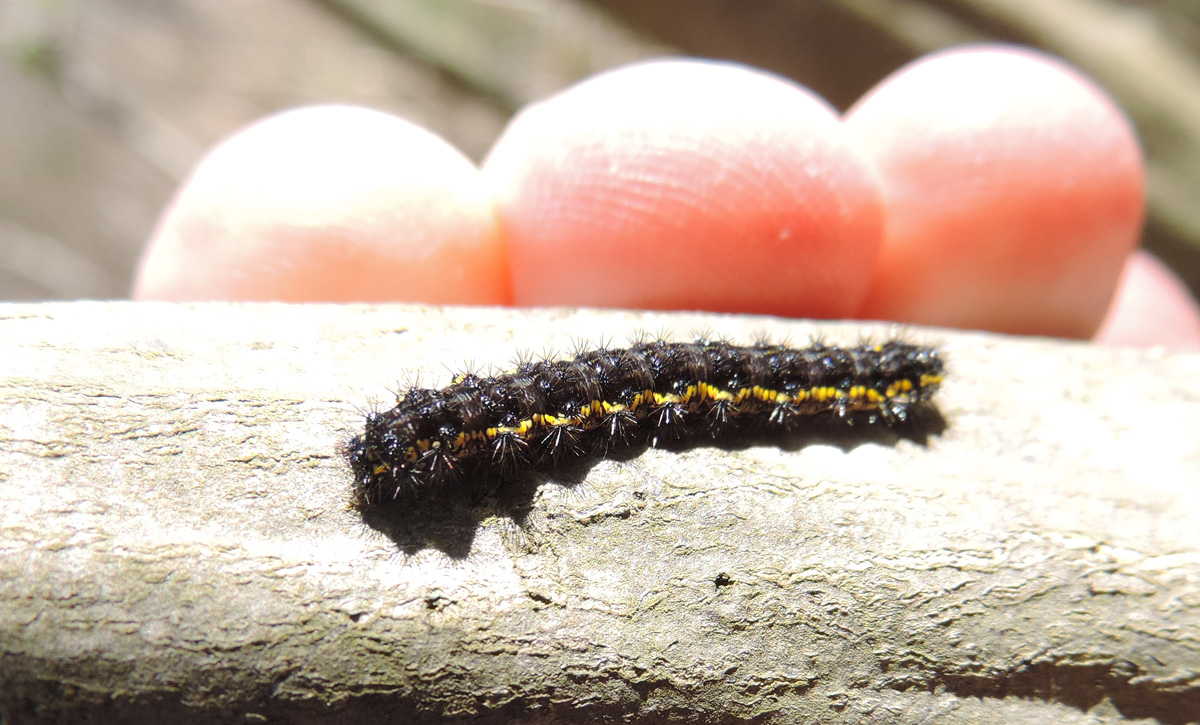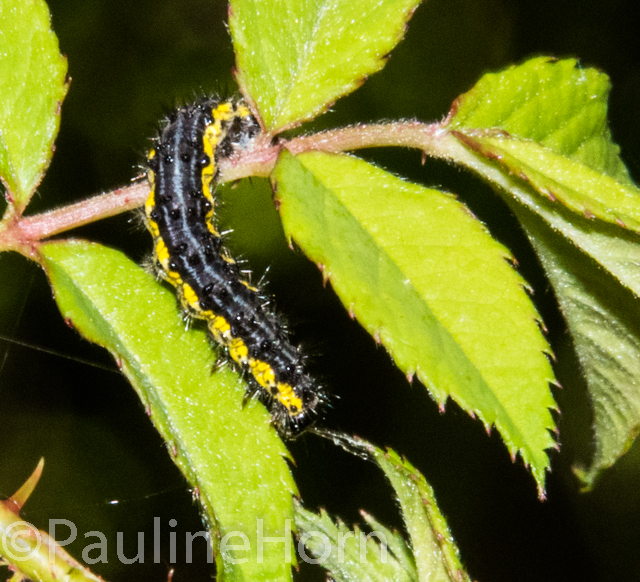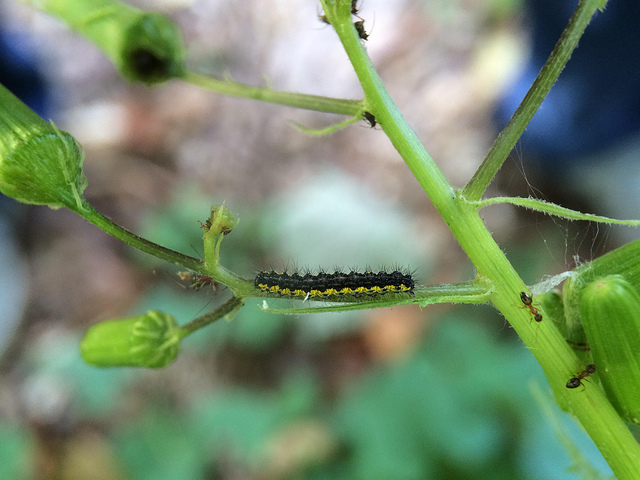Map Snapshot











30 Records
Status
Most common on the western shore. Our only record from the Eastern Shore is a larval record from Kent County. Appears to be absent from the mid and lower Eastern Shore. Will come to lights. Considered diurnal like other Haploa species.
Description
One of four Haploa species with white hind wings. Can be identified by the dark line that runs diagonally from the middle of forewing margin down towards the inner tip of the forewing. This dark line often has a smaller dark line that will run perpendicular to just below the forewing apex. All white forms may be indistinguishable from other white form Haploa individuals.
Relationships
Like all Haploa species, larvae feed on a variety of woody and herbaceous plant species.
Seasonality Snapshot
Source: Wikipedia
| Haploa contigua | |
|---|---|

| |
| Scientific classification | |
| Domain: | Eukaryota |
| Kingdom: | Animalia |
| Phylum: | Arthropoda |
| Class: | Insecta |
| Order: | Lepidoptera |
| Superfamily: | Noctuoidea |
| Family: | Erebidae |
| Subfamily: | Arctiinae |
| Genus: | Haploa |
| Species: | H. contigua
|
| Binomial name | |
| Haploa contigua | |
| Synonyms | |
| |
Haploa contigua, the neighbor moth, is a moth of the family Erebidae. It was described by Francis Walker in 1855. It is found in eastern North America,[2] from Quebec to the mountains of Georgia and west to South Dakota, Arkansas and Mississippi.[3]
References
[edit]- ^ Moth Photographers Group. Mississippi State University.
- ^ Savela, Markku. "Haploa contigua (Walker, 1855)". Lepidoptera and Some Other Life Forms. Retrieved January 27, 2018.
- ^ Butterflies and Moths of North America
- Pitkin, Brian & Jenkins, Paul. "Search results Family: Arctiidae". Butterflies and Moths of the World. Natural History Museum, London.
